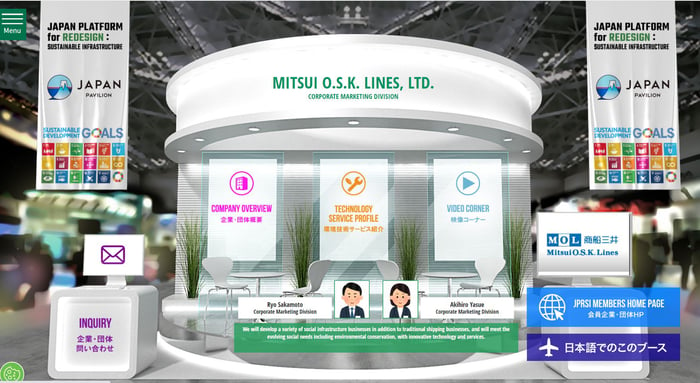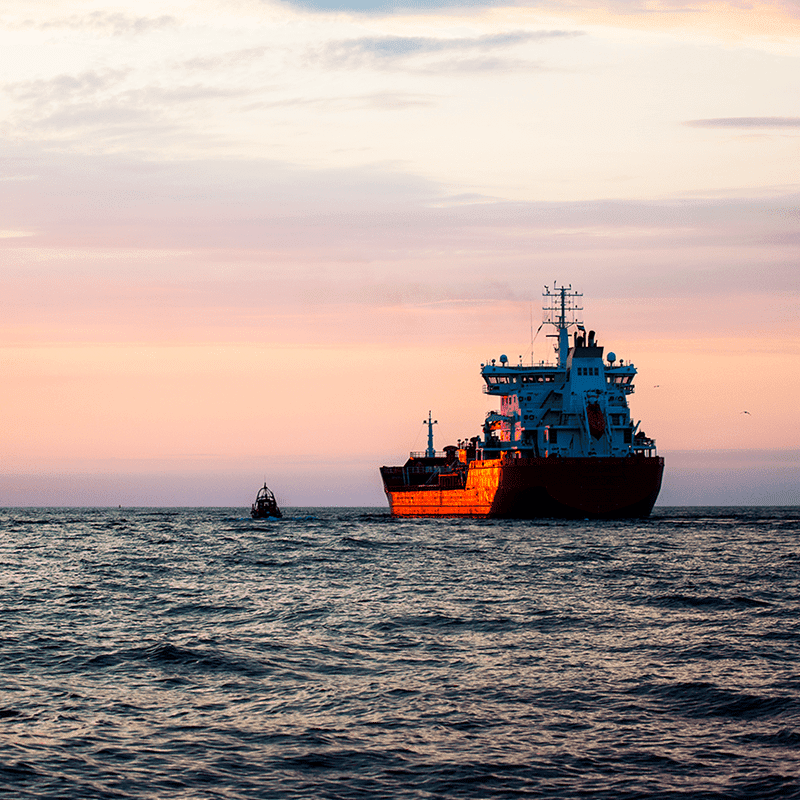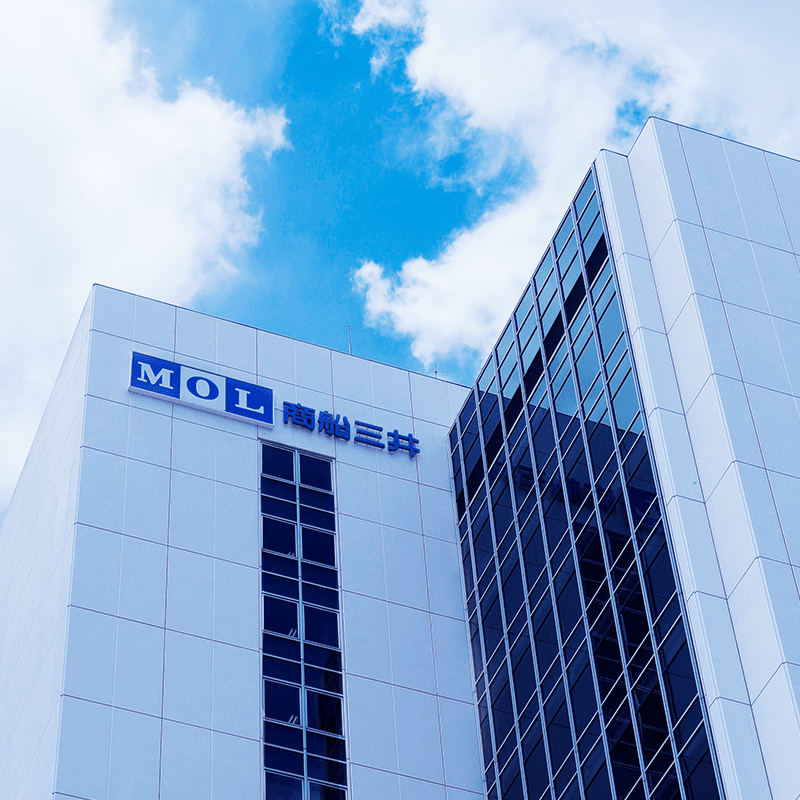BLOG
MOL initiatives in the South Asia & Middle East; interview with Managing Executive Officer
- General Shipping
2023.11.21
“We are in a middle of a transformation” Singh Ajay, Managing Executive Officer, who is in charge of the South Asia & Middle East region said. The essence of our Regional Strategy in BLUE ACTION 2035 is to enable growth in the future key economic regions of the world. We do this by empowering our local offices, strengthening market focus, and ensuring speed and quality of decision-making. We started this initiative in 2022, with India as a model case.
In addition, MOL has set the goal of achieving net zero greenhouse gas (GHG) emissions by 2050 in line with the "MOL Group Environmental Vision 2.2," and with the aim to create a sustainable world. MOL has been selected to exhibit in the Japan Pavilion, which will be hosted by the Ministry of the Environment as part of the COP 28 UN Climate Conference to be held in Dubai from November 30 to December 12, 2023.
We asked Mr. Singh about the status of activities and future initiatives of the MOL Group in the South Asia & Middle East region, which has the world’s fastest growing major economy, India, and also some of the world’s largest energy supplying countries.
Change of mind set is taking place
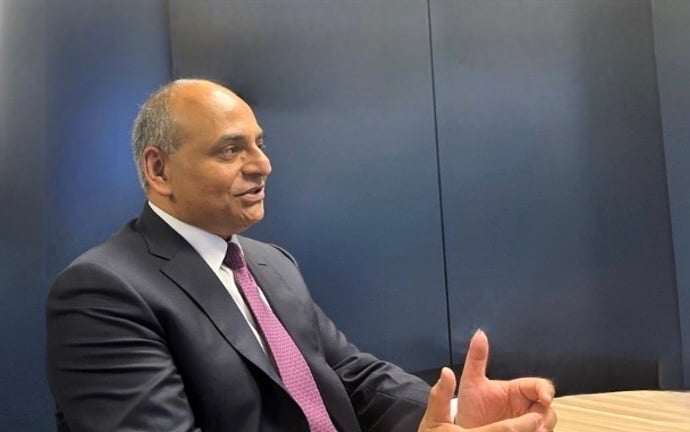
--- First of all, you became a board member of MOL from last year. Looking back on the last year, please advise your feelings, sense of ground and the achievement and so on.
Singh
- As you know, I came to MOL from another industry so I am enjoying learning new things. The shipping industry does have many aspects in common with my ‘parent’ energy industry – it is capital intensive, is subject to extreme price volatility, has various organizational complexities and so on. At the same time, shipping people are quite practical and MOL has a friendly culture. So I feel quite ‘at home’ here!
- Business wise, we are in a middle of an interesting transformation. Not just for my region, but as a part of the vision that the top leadership of MOL is implementing globally. We have initiated of more aggressive growth in the South Asian and Middle East region(SA-ME region), beyond the traditional shipping agency and logistics forwarding areas. So far, our biggest achievement has been creation of Sakura Energy (now renamed MOL India), which has further grown this year to a fleet of 11 vessels covering several segments including tankers, liquid gas ships, chemical tankers and even a bulk ship that was chartered in for a while – It is a new approach, reflecting ‘One MOL’ to combine multiple business segments into one team, based on market needs rather than internal business lines. Our LNG business has done very well, with new business secured from Qatar Energy and GAIL; PCC business has secured long term contracts with key Indian automakers. We are targeting entry into new logistics businesses such as cold chain logistics. Two real estate projects are being pursued. We are also growing India as a location for ship management - our Mumbai ship management team took on 5 LPG vessels this year, and MOLMI entered into manning for these vessels - and IT back office services. In the Middle East, we are negotiating with a number of major players for decarbonization-related shipping opportunities, in addition to two logistics projects in the UAE. So, it’s satisfying to have a very active list of opportunities under development, and our team is trying to convert these into revenue-earning businesses.
It’s a newly-created region within MOL, so we are building up the organization even as we grow the business. A new regional organizational system was announced in April, and we have recruited experienced professionals from outside the company, for example Akio Kusakabe (head of energy business in the Middle East), Loftur Thorarinsson (renewable energy, based in Tokyo) and Kaustubh Kulkarni (cold chain logistics, Mumbai). We are trying to diversify the working culture, with the people on the frontline, in contact with the customers, taking more initiative. MOL India has been set up as a new company, as a profit center containing multiple businesses, and common HR and financial management systems that are being set up. We announced a Leadership Development Framework for the region this month, which will be gradually used to identify and nurture talent. So a change of mindset is slowly taking place. I think that is the most encouraging thing to see at the moment.
---Actually, the “India-model” which was brought to MOL head office is a quite big impact for us as well. How about the reason for the successful implementation?
Singh
- The key point of what we now call the ‘India-model’ is that we must, as a company, provide high-quality, cost-effective and timely services to our customers, better than our competitors do, in a consistent manner. As a company, we need to do better in this respect. For this, the staff who are actually in contact with the customers and the staff in various divisions in Tokyo need to work together keeping the customer in mind first, with flexibility in capturing customer needs and opportunities beyond the traditional segmented way of doing things.This is especially important when you try to grow in a new market where you may not be well known, and in India especially nowadays we see the world’s strongest companies all eager to compete. The concept of the ‘integrated team’ was introduced between the head office and the region. And the senior level participation in those teams – meetings led by 、GMs (General Managers) or EOs (Executive Officers) - along with all the people concerned from various departments. We regularly follow up on progress of new deals or operational matters or whatever it may be, identifying the problems that may be preventing our growth or causing customer dis-satisfaction, and focus on solving those problems in a timely way. Actually, this is common sense and it is how all great companies work. We share the responsibility and authority, we work and take the decisions together. Sometimes it is difficult, there is conflict. But colleagues are dealing with these challenges and achieving success.
THREE strengths of MOL Group
---How about the strength points of MOL?
Singh
- Sure. I think the biggest strength of MOL is its brand. It stands for quality, integrity, a friendly way of doing business, a company that is reliable, has been around for almost 140 years. Unfortunately, the brand is not very widely known outside the maritime community, but it is recognized and it can be made more familiar to our markets. Many of the customers, I go to in the region, especially in the shipping segments, they say how much they appreciate MOL’s service. Our people have done an excellent job in building this strong reputation of the company. I think this is our first strength.
- Second, speaking about my region now, we have some good businesses which have been existing from the previous days. For example, the LNG business and the PCC business.
Because of it, we have people who know how to work in the region. Indian seafarers are among the most important communities we have in the company. We are able to utilize their problem-solving attitude to get things done. I find that sometimes when our commercial staff face difficulty with unfamiliar operational and technical matters, it helps to involve those who have actual experience of such matters.
- And third of course is the fact that as a company we have some good ‘value propositions’ i.e. our ‘products’ and services which customers find useful. Especially in respect of clean energy-related business areas, I hope we can differentiate ourselves for a while against our competitors to win new business.
MOL’s challenges of climate change,
responding pro-actively to society’s needs
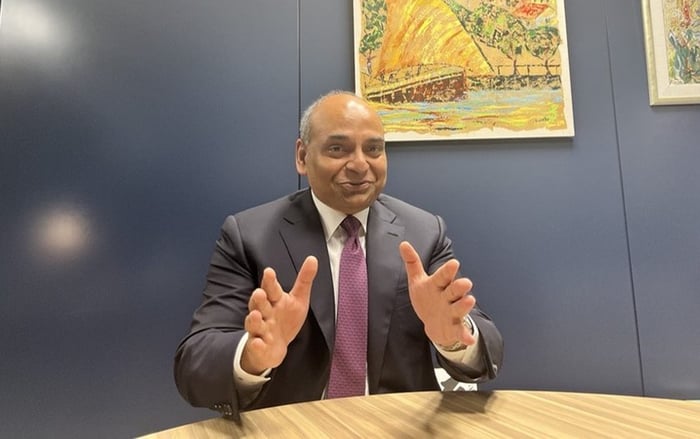
--Let me talk about COP28. MOL has been selected to exhibit in the Japan Pavilion, which will be hosted by the Ministry of the Environment held in Dubai from November 30 to December 12, 2023. What do you expect from this opportunity?
Singh
- It is a matter of pride for MOL to have been selected. We hope to present MOL as a progressive company with solutions to meet the challenge of climate change, responding pro-actively to society’s needs. We have a number of technologies, whether it is to utilize an existing energy source such as wind, or future energy sources like hydrogen and ammonia, etc. The Japan Pavilion will showcase Japan's exemplary products and services as well as its efforts to address climate change to the world. Under the theme of "Using wind power technology on vessels," MOL will exhibit the "Wind Challenger," its next-generation wind-propelled sail and the green hydrogen-producing vessel “Wind Hunter.”
MOL will speak at key events associated with COP28 to present our pragmatic approach. The climate dialog ongoing globally has unfortunately not yet settled key matters such as imposition of carbon levies or how the impacts of such measures are to be distributed among various regions or economic sectors. So it is quite important for MOL to be visible and seen in a positive way.
The second goal is to take the opportunity to advance our business development in the Middle East. Many countries such as Saudi Arabia, the UAE and Oman are embracing new economic opportunities presented by clean energies, and as a way to keep up their position as energy suppliers. We are promoting our clean shipping technologies to them, and we wish to break through into new countries.
MOL booth at online JAPAN PAVILION
--- How do you think about partnership with big national government companies and MOL?
Singh
- Yes, there is potential to do so. We have an example; in Oman we have a joint venture with Oman Shipping Company, and we played the role many years ago helping create it. Some countries such as Qatar and the UAE have very well-developed maritime companies of their own, but there are opportunities elsewhere.
South Asia & Middle East regional organization
to be a model for ‘One MOL’
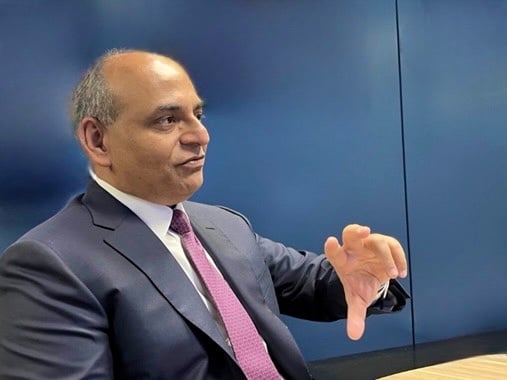
---What are your plans for the South Asia & Middle East region?
Singh
- In the long run, MOL’s goal is successful business expansion in overseas markets and becoming an even more capable organization. The further development of the SA-ME regional organization system will continue to support this. The slogan of ‘One MOL’ already recognized this, and we will continue to implement it.
The practical steps such as combining group companies in India into a single entity will continue, as a way to improve connection between businesses, come up with customer-centric solutions, improve the speed and quality of our decision making, and to develop and utilize our precious human resources more efficiently. The implementation of a common HR system will help us better identify and attract talent, and develop it for the benefit of our global business. Similarly, a unified financial system will help us more efficiently utilize our financial resources, which is crucial to having a cost-competitive yet profitable business. These are some of the practical aspects of One MOL that we hope to contribute to the global organization.
I would like MOL’s investment in the region itself to reflect or exceed the region’s share in world GDP. As it is a region of growth, it makes sense for investment to be made there. This means expanding our shipping business but also entering new areas such as cold chain logistics, rail logistics and real estate as we are trying to do. - I would also like MOL to benefit from the dynamism in the region: we have a young population, ambitious to secure a better quality of life, and innovating new ways of doing things. India has a large number of start-ups in areas ranging from space technology to digital tech; it is also increasingly a global center for technical design, development and engineering for a range of industries. For example, my earlier employer, Shell, has been operating one its 3 global R&D centers in Bangalore for several years now, employing several hundred scientists and engineers (the other two are in Amsterdam and Houston).So, our region is not just a market but also a global enabler of business.
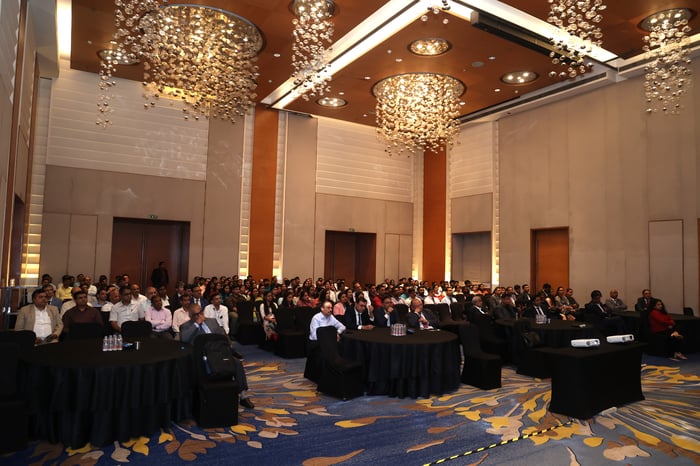
HR session for MOL staff in Mumbai
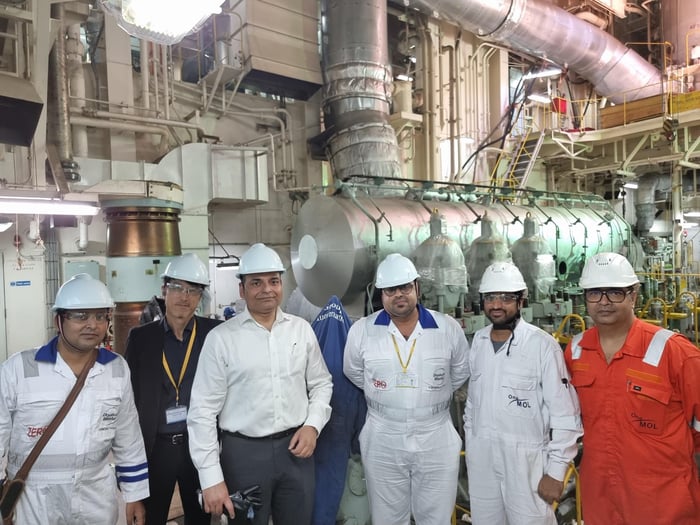
Sakura and SAME region colleagues in engine room of VLGC Hisui with the ship’s crew
(The 3rd from the left; Singh Ajay)
Increasing the comfort level of Japanese people in engaging with non-Japanese cultures is an urgent need
---What are the potential of Japanese companies (MOL) that you feel after your overseas career?
Singh
- Having worked within 3 great management cultures during my career - Indian, Western, and now Japanese – I can say that the Japanese qualities of simplicity, patience, sincere hard work, resilience, and emphasis on good social relationships are tremendous strengths. When these are combined with decisive leadership, and a culture of solving problems and quickly responding to opportunities, great things can be achieved.
Making it easier for our Japanese staff to be able to engage freely with non-Japanese cultures is an area we are focusing on. As someone who has himself developed a life outside my own home country, I know the challenges very well but I know one can also benefit greatly by allowing other influences to change one’s attitudes and beliefs. Japanese companies also need to adopt much more flexible organizational systems, for which an enormously more open and flexible mindset is needed; these days, dramatically new models of innovation and of doing business are emerging. Japanese companies need to not only keep up but also to compete to win.
---How do you refresh on weekends and holidays.
Singh
- My holidays have always been spent with my family – my wife and 2 children. These days, our children are away at university overseas, so when they come home for their holidays we enjoy the time at home, eating out and going for short trips outside Tokyo. I like to drive them around. We have been to all parts of Japan now, except Okinawa – which we mean to do soon. My wife and I find it relaxing to watch movies at home. She is keen on art, and we have some favorite museums we like to visit. Other than that, these days there is not time for much else other than a bit of gardening with my wife on the weekend.
AJAY SINGH
Responsible for South Asia and the Middle East
- Joined MOL in October 2020 as Executive Advisor
- In April 2022, he was appointed Managing Executive Officer of the company
- Previous career:
・ Japan Petroleum Exploration Company, Tokyo (2014-20): Special advisor to chairman and president, and head of strategy & commercial
・Shell group of companies, based in Delhi, Mumbai, London and The Hague (1995-2014): worked in the downstream, LNG, upstream and projects & technology businesses
Education:
- B.Eng. (Walchand College of Engineering, India)
- MBA (University of Mancheshter, UK)
- Advanced Management Program (Harvard Business School)
Recommended Articles
2022.07.05
- General Shipping
2021.04.13
- Energy
2023.12.19
- General Shipping
2021.08.07
- Eco Friendly
2025.03.18
- General Shipping
Latest Articles
2025.12.09
- Eco Friendly
- General Shipping
2025.12.03
- General Shipping
2025.11.20
- Energy
- General Shipping
- BLOG
- MOL initiatives in the South Asia & Middle East; interview with Managing Executive Officer
